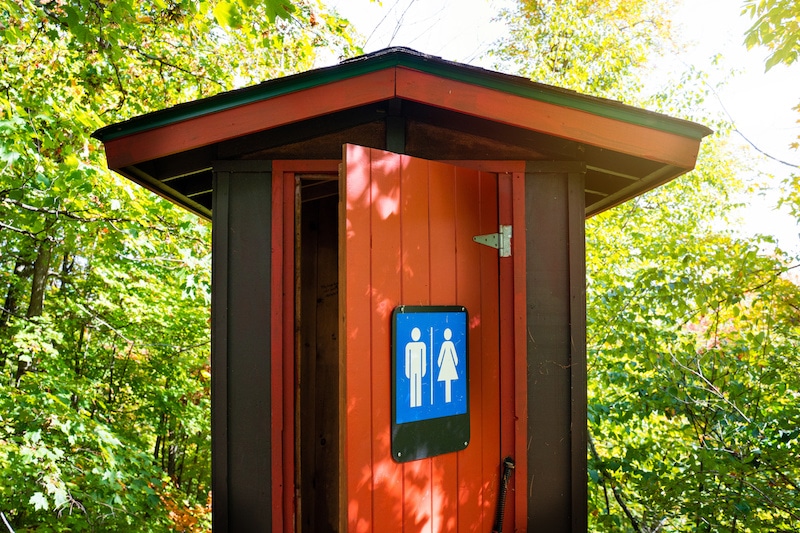What We'll Cover
Everybody who has gone camping with an RV knows at some point the waste tank on the vehicle needs to be emptied. However, even if it may just be wastewater and nothing else, that doesn’t mean the camper or traveler can just drain that tank anywhere. If you want to abide by the Leave No Trace Principles, as all good campers should, you need to know how to properly dispose of your waste.
Greywater and blackwater are waste, and if they aren’t disposed of correctly, they pose a real threat to the environment. As a result, tanks holding such liquids need to be emptied properly, consistent with protecting the environment as well as public health. Water alone can transmit illness and disease very quickly, especially in well-trafficked areas. This has been historically known for centuries, dating back to early medical science in crowded London during the 1800s.
The Old Days Were Better
Ideally, the best dump location is an RV water tank dumping station. But when you’re on the road, it’s not always apparent as you drive from point A to point B where to pull over and drain the RV tanks properly. Again, never ever just pull over to an empty area and drain onto open ground. You are creating a public health risk and you could be fined or even arrested for doing so, ranging from pollution to public health violations.
In the old days, RV drain tank locations where everywhere on the road. Every rest stop, gas station, and campground had one just for that purpose. Unfortunately, a lot of these free locations disappeared over the years because of the cost of keeping them ready as well as due to rude and uncaring campers dumping all sorts of trash in them rather than in their camping trash cans or creating real biohazards with leaving the wrong material. Local governments who were responsible for the cleanup started eliminating the free drain spots entirely to avoid the hassle, putting the issue back on RV owners and users in total due to the behavior of a few.
Research Locations
First, you’re going to have to incorporate more planning in your RV trips. That means getting a map for your trip area, using references, and searching the Internet to find all the viable and known sani-dump locations along your route. Then mark them on your map, or keep a list handy so you can type them into your GPS. Search for dump stations, sani-dumps, RV dump locations, and similar terms to find as many locations as you can to have plenty of options on your trip. There’s even a website dedicated to helping campers find RV dump sites in the United States.
Get Smart
If it’s your first trip and now your first RV drain session, ask other RV owners nearby for tips and procedure before you go or at RV stops. Don’t try to guess through the process, or it could turn into a very messy mistake to clean up on the road. General RV instructions don’t cover little details specific to your RV model, and experience often-times catches these mistakes before they happen.
Be a Good RV Traveler
Don’t put anything in a drain spot or reservoir aside from the actual liquid to be drained. Gloves and trash belong in the trash can nearby, not the drain. Make sure to use lots of water for your blackwater tank, the one with the toilet solids. And if you do make a mess near the drain or your RV, clean it up. If you wouldn’t want to find something left behind by another camper, make sure you aren’t leaving it behind yourself. Finally, always wash your hands and sanitize them as well as wash any clothing that may have been affected by splashing. You and your family don’t need to catch a bug due to a drain exposure, and lots of bacteria and viruses will be in and around such facilities. Contact risk alone is high as a result. Cleaning also includes all your tools and hosing as well.
Greywater Disposal While Tent Camping
If you’re tent camping and don’t have an RV, you might be at a loss for what to do with the greywater leftover from cleaning your dishes. It’s safe to dispose of greywater in nature, but you need to follow a few rules. First, when cleaning your dishes in your camping sink, make sure to only use biodegradable dish soap. Second, strain out all the solids that may be in the water and dispose of those with your other garbage. Take the wash basin full of greywater and make sure you’re at least 100 feet from any water source or campsite. When disposing of the water, don’t just pour it into the dirt: toss it out of the basin in an arc around you for even dispersal. This helps prevent all the contaminants from going into one spot and helps campers practice good campground courtesy.
The responses below are not provided, commissioned, reviewed, approved, or otherwise endorsed by any financial entity or advertiser. It is not the advertiser’s responsibility to ensure all posts and/or questions are answered.


![Tips to Go Camping With a Toddler [Different Weather]](/assets/images/375a17532f44c72a41d33b1008823cf3.png)


